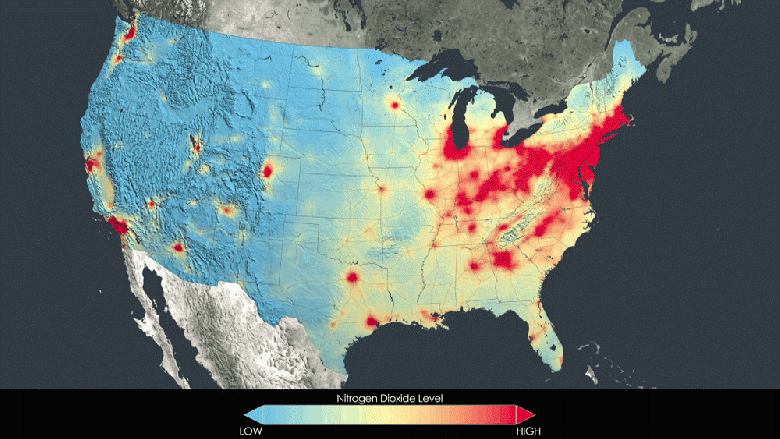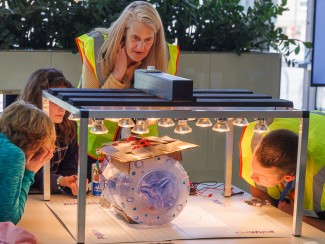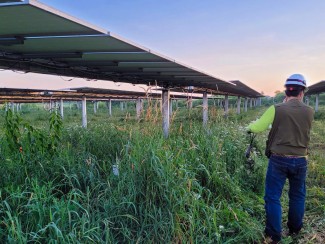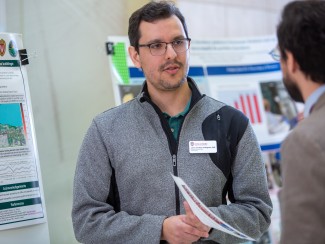
On October 1, the U.S. Environmental Protection Agency (EPA) announced the lowering of its national ambient air quality ozone standard (NAAQS) from 75 to 70 parts per billion (ppb). The rule effectively limits the amount of a major ground-level pollutant – the “smog” generated by vehicles, industry, and power plants – considered safe to breathe. The EPA expects states and counties to develop new plans for improving air quality and to meet the new standard by 2025. We asked 2015 Energy Summit panelists from across the U.S. to weigh in on the new rule.
Rob Kaleel, executive director of the Lake Michigan Air Directors Consortium (LADCO), notes how states will have to develop methods to review air quality data and make plans for meeting the new standard. LADCO supports states in the Upper Midwest on technical analysis and planning for air quality problems, including Wisconsin and neighbors Illinois, Michigan, Indiana, Ohio and Minnesota. Over the next two years, states and the EPA will determine what areas exceed the new standard, based on measurements from ground-based monitors. If an area has bad ozone days too frequently, it will be designated as “non-attainment.”
“Areas designated as non-attainment are charged with developing plans for achieving the standards by the deadlines established by the Clean Air Act,” says Kaleel. “States’ plans for meeting the standards will need to be developed in partnership with stakeholders that may be affected, including the general public, upwind and downwind states, and commercial, industrial, and transportation sectors.” Examples of emission-cutting programs may include “stricter permitting requirements on new industrial sources, and may in some cases mean stricter pollution controls on emission sources,” he adds.
Arlene Fiore, Associate Professor in the department of Earth & Environmental Sciences at Columbia University highlights one challenge of a tighter ozone standard: air pollution sources out of U.S. control, known as “background” ozone. “A lower NAAQS level raises the importance of background ozone,” she says. “Even in the absence of any human activity, ozone occurs naturally. Background ozone includes this portion, as well as ozone resulting from human activities elsewhere in the world. Background ozone levels are generally largest over high-altitude regions of the Western U.S. during spring.” Fiore also reports that while air quality has improved substantially over the past few decades, numerous studies conclude that continued reductions in U.S. nitrogen oxide emissions that lead to ozone pollution will yield cleaner air.
Brian Potts, an attorney with Foley & Lardner, LLP and moderator for the summit’s session on the Clean Power Plan, expects challenges for states needing to implement changes to come into compliance. “In the long term, this standard will almost certainly have a huge economic impact,” he says. “The EPA estimates that annual compliance costs for the new ozone standard will be around $3 to $4 billion per year. In Wisconsin, the eastern part of the state will be the most impacted because that’s where the air quality is the worst.”
Todd Palmer, a Michael Best & Friedrich LLP attorney and plenary speaker for the summit, adds that the new ozone standards will increase those areas of the country that will be subjected to increased regulatory burdens and more stringent emission controls, thereby driving up the cost of manufacturing in the United States. “These regulations, coupled with the myriad of other requirements being imposed under the Clean Air Act, are creating the equivalent of a structural budget deficient for many industries,” says Palmer. “Compliance costs keep increasing, yet the price that can be changed for products in the world marketplace is limited by competition from other countries. At some point this becomes unsustainable for U.S. manufacturing.”
The new ozone standard is one of many emerging topics in energy and air quality that have motivated the design of the 2015 Energy Summit, “Air and Energy: The Path Ahead for U.S. States.” Summit Chair and UW-Madison professor Tracey Holloway highlights the links between ozone control and the emerging challenge of carbon control.
“This new ozone standard is coming at the same time as other changes to our energy and air quality system, like the Clean Power Plan, biofuels as a low-carbon energy source, and an electricity infrastructure that includes more renewables.” Holloway says, “It has been exciting to pull together many of the best thinkers on these issues all in one place.”
Hear Fiore, Kaleel, Potts, Palmer and other experts discuss all things air and energy at the 2015 Energy Summit on October 13, 2015. Related sessions will address the Clean Power Plan, biofuels, global air pollution and satellite data, building efficiency, transportation and livable cities, and electric reliability. Space is limited, so reserve your space today.





